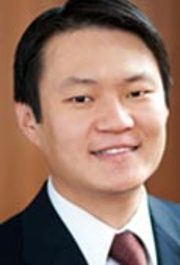In August of 2013, the global markets experienced the perils of an ongoing sea change in finance: Goldman Sachs encountered a serious options trading malfunction due to a programming error; Everbright Securities, a leading Chinese securities broker, suffered a nearly $4 billion trading error due to a software glitch; and the NASDAQ stock exchange suspended trading for three hours on a regular trading day due to technical difficulties.
In a recently published article, The New Investor, I examine the ongoing sea change in finance. Machines appear to be on the rise and humans on the decline. Human endeavors have become unmanned endeavors. Human thought and human deliberation have been replaced by computerized analysis and mathematical models. Technological advances have made finance faster, larger, more global, more interconnected, and less human. Modern finance is becoming an industry in which the main players are no longer entirely human. Instead, the key players are now cyborgs: part machine, part human. Modern finance is transforming into cyborg finance.
The article offers an early, descriptive, and normative examinations of this sea change and its wide-ranging effects on law, society, and finance. I begin by placing the rise of artificial intelligence and computerization in finance within a larger social context. Next, I explore the evolution and birth of a new investor paradigm in law precipitated by that rise. I then identify and address regulatory dangers, challenges, and consequences tied to the increasing reliance on artificial intelligence and computers. Specifically, I warn of emerging financial threats in cyberspace, examine new systemic risks linked to speed and connectivity, study law’s capacity to govern this evolving financial landscape, and explore the growing resource asymmetries in finance. Finally, drawing on themes from the legal discourse about the choice between rules and standards, I close with a defense of humans in an uncertain financial world in which machines continue to rise, and it asserts that smarter humans working with smart machines possess the key to better returns and better futures.
The full article, The New Investor, which was recently published in the UCLA Law Review is available here.
 Sky Blog
Sky Blog

